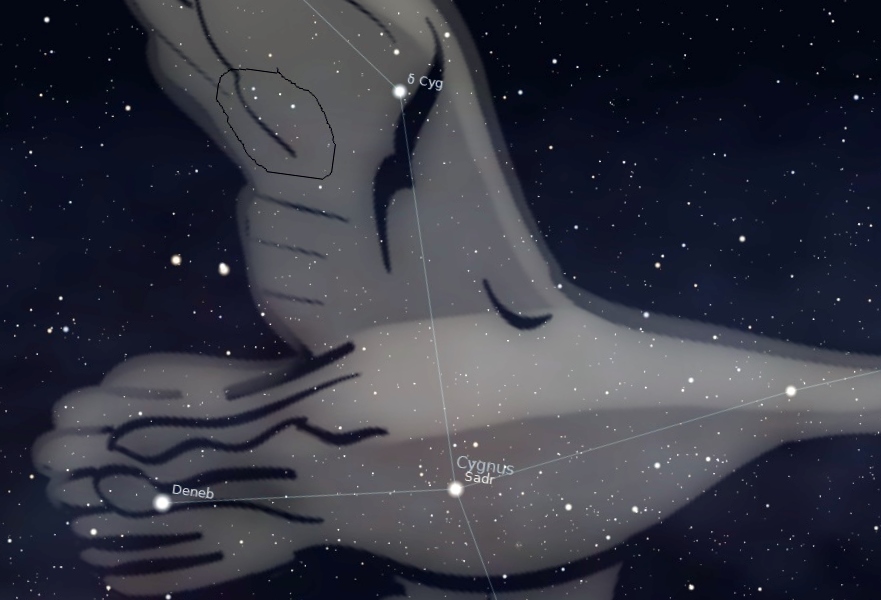This Week’s Sky at a Glance, 2020 July 18 – 25 ~by Curt Nason
Constellations are not the only stellar figures in the night sky. Any imaginative figure seen that is not one of the 88 constellations is called an asterism. The Big Dipper in Ursa Major and the Sagittarius Teapot are two of the most prominent. Others require binoculars or a telescope, such as the Coathanger and ET star clusters. One I read about in Sky & Telescope magazine a few years ago is a smiley face in Cygnus the Swan. Scan with binoculars just below the swan’s right (western) wing near the brightest star in that wing, and look for a pair of eyes above a semicircle grin of five stars. You will probably smile back.
This summer, spend some time scanning the night sky randomly and let your imagination run wild. Pareidolia is a phenomenon in which your mind sees a familiar pattern where none exists. Just as we imagine figures in clouds by day, we can imagine them in the stars at night. Let me know what you see.
This Week in the Solar System
Saturday’s sunrise in Moncton is at 5:46 am and sunset will occur at 9:04 pm, giving 15 hours, 18 minutes of daylight (5:54 am and 9:06 pm in Saint John). Next Saturday the Sun will rise at 5:53 am and set at 8:56 pm, giving 15 hours, 3 minutes of daylight (6:01 am and 8:59 pm in Saint John).
The slim waning crescent Moon is near Mercury on Sunday morning, and it is new on Monday. Mercury is at greatest elongation from the Sun on Wednesday, while Venus slides along the southern horn of Taurus away from Aldebaran. Jupiter is now rising before sunset, and Saturn is at opposition on Monday The two gas giants will make a splendid evening sight throughout the summer and autumn. By the end of the week Mars will be rising before midnight, slowly appearing bigger and brighter as it moves toward a spectacular opposition in October. Beautiful comet C/2020 F3 NEOWISE is circumpolar most of this week, moving westward along the feet of Ursa Major. It is best seen in the evening sky now, when it is highest above the horizon.
With astronomy meetings and outreach activities on hold, you can watch the local Sunday Night Astronomy Show at 8 pm and view archived shows.
Questions? Contact Curt Nason.


In my early days when I was still totally lost I saw a Gecko on a pogo-stick: 2 bright eyes, a curve of stars for a body, a straight line for the stick. Not sure now where he was, somewhere a-round Delphinus I think. I haven’t seen him for awhile, I can’t seem to find him; perhaps he has moved on.
To the left of Graffias are 3 stars replicating the Scorpion’s stinger. Do they regenerate?
To the lower right of Procyon, in Monoceros is a Baton, and below Gemini are some tiny Domino 6’s.
While just looking around a few years ago I found a small version of the Beehive. I learned that it was IC 4665. I later learned it is sometimes called the Summer Beehive.